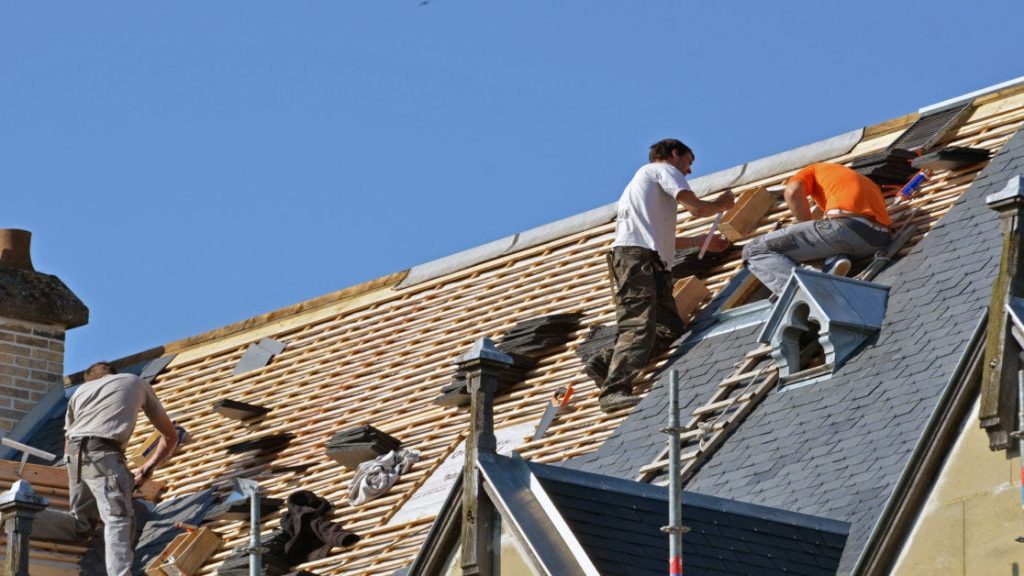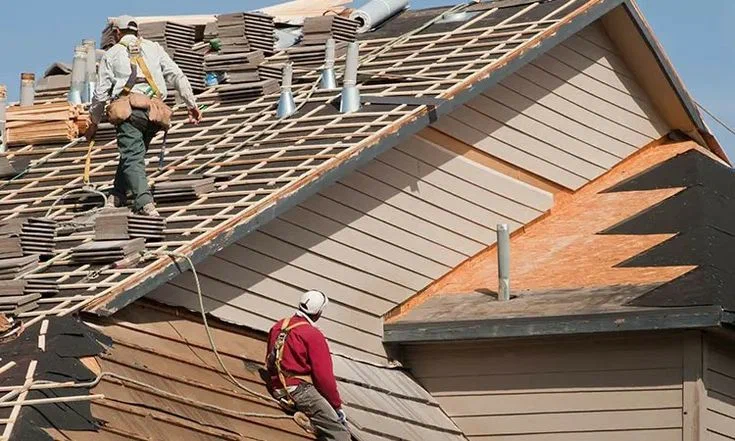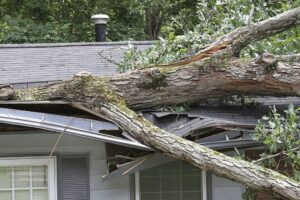A sturdy roof is more than just an architectural feature—it’s your home’s first line of defense against weather elements, environmental damage, and time. Whether you’re dealing with an aging structure or damage from a recent storm, a residential roof replacement can restore the safety, energy efficiency, and curb appeal of your home. But how do you know when it’s time for a roof replacement? What are your options, and how do you choose the right contractor?

This complete guide will walk you through everything you need to know about residential roof replacement, from identifying the signs of wear to hiring the right professionals for the job.
Why Roof Replacement Matters
Your roof is a critical component of your home’s integrity. Over time, roofs wear out due to constant exposure to the sun, wind, rain, snow, and temperature fluctuations. Delaying a needed roof replacement can lead to:
- Water leaks and mold growth
- Structural damage to your home’s interior
- Increased energy bills due to poor insulation
- Decreased property value
Proactively replacing your roof ensures you maintain a safe, energy-efficient, and attractive home.
Signs It’s Time to Replace Your Roof
It’s not always obvious when a roof needs to be replaced. While some signs are dramatic—like sagging sections or extensive leaks—others can be more subtle. Look for the following indicators:
1. Age of the Roof
Most asphalt shingle roofs last between 15 and 30 years. If your roof is nearing or past its expected lifespan, it’s time to consider a replacement.

2. Missing or Damaged Shingles
Cracked, curled, or missing shingles expose the underlayment to water and can indicate broader structural problems.
3. Granule Loss
If you find shingle granules in your gutters or downspouts, it may be a sign that your roof is deteriorating.
4. Water Damage Inside the Home
Water stains on your ceilings or walls are often the result of a failing roof, even if the leaks seem minor.
5. Sagging Roof Deck
A sagging roof deck may be a sign of water damage or weakened structural support.
6. Increased Energy Bills
Poor ventilation and insulation from an old or damaged roof can cause your heating and cooling systems to work harder.
Choosing the Right Roofing Material
When replacing your roof, one of the most significant decisions is selecting the right material. Each option has its own pros and cons:
Asphalt Shingles
- Pros: Cost-effective, widely available, easy to install
- Cons: Moderate lifespan (15–30 years), vulnerable to extreme weather
- Best For: Budget-conscious homeowners
Metal Roofing
- Pros: Durable (40–70 years), energy-efficient, fire-resistant
- Cons: Higher upfront cost, noise during heavy rain or hail
- Best For: Long-term investment and energy-conscious homeowners
Wood Shakes and Shingles
- Pros: Natural appearance, good insulation
- Cons: High maintenance, susceptible to rot and insects
- Best For: Aesthetic appeal in historic or rustic-style homes
Clay or Concrete Tiles
- Pros: Extremely durable, fire-resistant, distinctive look
- Cons: Heavy (may need structural reinforcement), expensive
- Best For: Mediterranean or Spanish-style architecture
Slate Roofing
- Pros: Long lifespan (75+ years), elegant appearance
- Cons: Expensive, requires professional installation
- Best For: High-end homes or historic properties
Roof Replacement Process: Step by Step
Understanding the replacement process can help you prepare and reduce stress during the project.
Step 1: Roof Inspection
A roofing contractor will assess the condition of your existing roof to determine the scope of work. They will look at the shingles, underlayment, decking, flashing, and more.
Step 2: Planning and Permitting
Depending on local building codes, you may need permits before replacing your roof. A reputable contractor will take care of this step for you.
Step 3: Tear-Off or Overlay
You can choose to overlay new shingles over your old ones (if local codes allow and the current roof is in decent condition) or do a complete tear-off. A full tear-off is generally recommended for better long-term results.
Step 4: Deck Preparation
After removing the old materials, the roof deck will be inspected and repaired if needed to provide a stable base for the new roof.
Step 5: Underlayment and Flashing Installation
Waterproof underlayment and flashing are installed to prevent water infiltration around chimneys, skylights, and vents.
Step 6: Installing the New Roofing Material
The new shingles, tiles, or panels are installed using best practices and manufacturer guidelines.
Step 7: Cleanup and Final Inspection
Once the installation is complete, the contractor will clean the area of debris and nails and perform a final inspection to ensure quality workmanship.
Budgeting for a Roof Replacement
The cost of replacing a residential roof depends on various factors:
- Roof Size and Pitch: Larger or steeper roofs require more materials and labor.
- Material Choice: Asphalt shingles are less expensive than slate or metal.
- Labor Costs: Varies by location and contractor expertise.
- Additional Repairs: Deck replacement, insulation, or gutter work can add to the cost.
On average, roof replacements can range from $5,000 to $20,000 or more depending on these factors. While it may seem like a significant investment, a new roof can dramatically increase your home’s resale value and energy efficiency.
Choosing the Right Roofing Contractor
Your choice of roofing contractor can make or break your project. Here’s what to look for:
1. Licensing and Insurance
Always choose a contractor who is licensed, bonded, and insured to protect yourself from liability.
2. Local Experience
Hire a company with experience working in your region’s specific weather conditions and building codes.
3. Warranties
Ensure your new roof comes with both a manufacturer’s warranty and a workmanship warranty.
4. Reviews and References
Check online reviews and ask for references to evaluate the contractor’s reputation.
5. Clear Communication
Choose a contractor who provides a detailed estimate, outlines the process, and answers your questions professionally.
Roof Maintenance Tips Post-Replacement
To maximize the life of your new roof, follow these maintenance tips:
- Inspect your roof visually at least twice a year
- Keep gutters clean to avoid water backflow
- Trim overhanging tree branches
- Address minor issues (like small leaks or missing shingles) immediately
- Schedule regular professional inspections
Why Choose Atlas Roofing & Restoration?
If you’re located in Northeast Ohio and are considering a roof replacement, Atlas Roofing & Restoration is your go-to expert for professional, affordable, and reliable roofing solutions.

With years of hands-on experience, our team understands the challenges that come with Ohio’s unique climate. Whether your roof has been damaged by storms or simply reached the end of its lifespan, we offer top-quality materials, expert workmanship, and transparent communication from start to finish.
We’re not just a roofing company—we’re your neighbors, committed to protecting your home as if it were our own. From residential roof replacements to complete storm restoration services, Atlas Roofing & Restoration brings excellence to every job.
Final Thoughts
A roof replacement is a major home improvement, but it doesn’t have to be overwhelming. By understanding the process, choosing the right materials, and hiring a trusted contractor, you can ensure a smooth experience and a roof that protects your home for decades.
When you’re ready to replace your roof, trust the professionals at Atlas Roofing & Restoration to guide you every step of the way. We’re here to help you protect what matters most—your home, your family, and your peace of mind.




